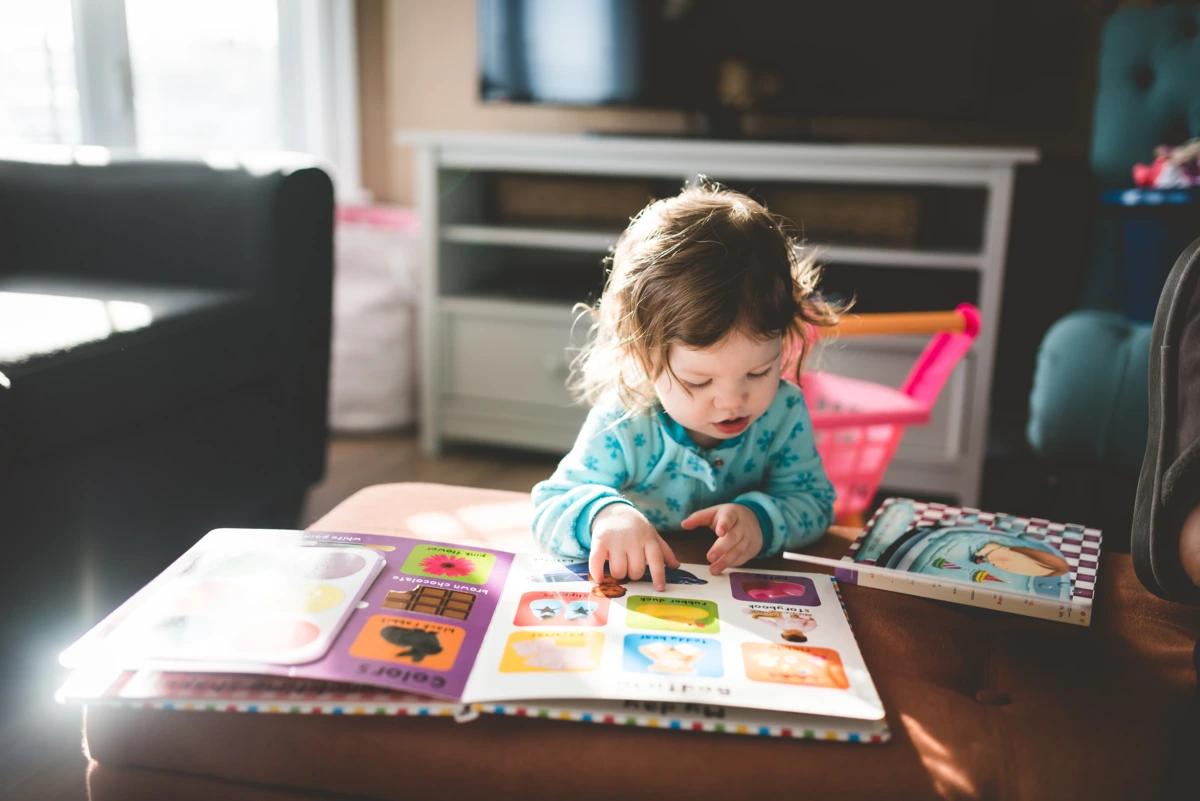
As a soon-to-be parent, I found myself delving into the world of baby names, seeking not just beauty and meaning, but uniqueness in the way they are spelled. I've always believed that a name is more than just a label; it's a first gift to our child, a defining piece of their identity. In this post, I want to share with you my journey and tips on personalizing traditional baby names with unique spellings.
Embracing Creativity
When I embarked on this journey to find a unique name for my child, I realized it was an opportunity to embrace creativity in a profound way. Naming, I believe, is an art form, a personal expression that allows for an imaginative connection between you and your child. I decided to step out of the conventional box and explore the endless possibilities that lay in altering the spellings of traditional names.
My aim was to create a name that was not only phonetically pleasing but also visually distinctive. The idea was to retain the essence of a traditional name while infusing it with a fresh, modern twist. For example, turning "Catherine" into "Kathryn" or "Katherin" maintained the name's classic beauty but added a unique element that set it apart.
This creative process was not just about being different for the sake of it. It was about crafting a name that had its own personality, one that could mirror the individuality I hoped to see in my child. I was inspired by the trend of combining letters in unexpected ways, like using 'y' instead of 'i' or 'z' instead of 's'. I also considered softer alterations, such as adding an extra 'l' or 't' to a name to give it a slightly different pronunciation and feel.
However, creativity in naming doesn’t mean dismissing the roots and meanings of names. I found it important to understand the history and significance behind names to ensure that my creative adaptations didn’t stray too far from their original essence. For instance, when playing with the name "Michael," I considered variations like "Mykel" or "Mikael," which respect the name’s historical richness while offering a unique identity.
I also drew inspiration from different languages and cultures, which opened up a world of possibilities. A name like "John," common and beloved in many cultures, could be transformed into something like "Jhon" or "Jon," each version reflecting a different cultural influence.
In my quest for creativity, I learned that a name’s uniqueness comes not only from how different it is but also from the love and intention behind its choice. This process became a meaningful exploration of identity, heritage, and personal expression, all wrapped up in a few carefully chosen letters.
Research and Inspiration
The phase of research and inspiration was, for me, an enlightening and enriching part of my baby-naming journey. It wasn’t just about flipping through baby name books or browsing endless online lists; it was a deeper dive into the history, culture, and linguistics behind names.
I started by delving into the etymology of names. Understanding the roots of a name – whether it was Latin, Greek, Celtic, or another origin – gave me insights into its original form and variations over time. For instance, I learned that the name "Elizabeth," stemming from the Hebrew "Elisheva," has seen many variations across cultures, such as "Elisabet," "Elisavet," and "Elizaveta." This knowledge provided a rich foundation for thinking creatively about spellings.
Exploring different cultures was another key aspect of my research. Names that are common in one culture often have beautiful and unique variants in another. For example, the name "John" transforms into "Jean" in French, "Giovanni" in Italian, and "Ivan" in Russian. This multicultural approach offered a plethora of ideas on how to modify a name while retaining its original essence.
I also drew inspiration from literature, history, and even my own family tree. Historical figures, literary characters, and ancestors' names served as a wealth of inspiration. I found myself drawn to names with a story or a personal connection, which I could then adapt into a more unique form. Art and music were also significant sources of inspiration. The names of painters, musicians, and their works often have a lyrical and artistic quality that can inspire unique name spellings. For example, the name "Aria," stemming from musical terminology, could be transformed into "Arya" to add a modern twist.
Another enlightening aspect was understanding the trends in baby names over the decades. I noticed how certain spellings became popular in different eras, and this helped me gauge how a name might be perceived in today's context. It was fascinating to see how names evolved over time and how modern trends influenced naming conventions.
Balancing Uniqueness with Practicality
As I journeyed further into the realm of unique baby names, I quickly realized the importance of striking a balance between creativity and practicality. It was essential to me that while the name stood out, it shouldn't stand in the way of my child's everyday life. I didn't want the name to be a constant source of confusion or mispronunciation.
One of the first tests I employed was saying the name out loud. This might seem obvious, but it's incredible how different a name can sound when spoken. I wanted a name that was easy to pronounce and wouldn't lead to my child constantly correcting others. For instance, modifying "Emily" to "Emileigh" keeps the phonetic integrity while adding uniqueness. I also considered the spelling complexity. The goal was to avoid overly complicated or unintuitive spellings that could lead to lifelong explanations. A name like "Sara" could become "Sahra," which retains a familiar sound but is distinct without being convoluted.
It was important for me to choose a name that would age well with my child. I pondered how the name would suit them at different stages of life – as a child, a teenager, and an adult. A name that's adorable for a toddler might not suit a professional adult. I sought a timeless quality in the names, ensuring they were as fitting for a CEO as they were for a child. Understanding the cultural and social implications of a name was also key. I researched to ensure the name didn't have unintended meanings or associations in other languages or cultures. It was crucial that the name was respectful and wouldn't inadvertently cause embarrassment.
In the end, I learned that simplicity could coexist with uniqueness. A small tweak in spelling or an uncommon letter could make a common name stand out without complicating it. It was about finding that sweet spot where the name was both distinctive and practical.
Mixing and Matching
One of the most exciting parts of my journey in naming was the process of mixing and matching different names. This creative approach allowed me to blend elements from various names I loved, forming a completely unique name that held its own charm and identity.
I started by listing out names that I and my partner were fond of, then played around with combining their parts. This was like a fun puzzle, seeing which pieces fit together harmoniously. For example, merging "Eleanor" and "Ann" could lead to "Elannor" or "Eleanora." It was a way of honoring more than one loved one or favorite name in a single, unique name.
I paid attention to the rhythm and flow of names. Combining names with varying syllables often resulted in a melodious and balanced name. I experimented with short names paired with longer ones, like "Mae" and "Isabella" to form "Maela." This process wasn’t just about putting names together; it was about creating a pleasing and harmonious sound.
Another aspect was to mix names in a way that their meanings combined to form a new, profound significance. I looked up the etymology and history of names to understand their meanings deeply. For instance, merging "Leo" (lion) and "Hart" (strong, brave) could give "Leohart," a name that carries a powerful meaning.
I also enjoyed playing with different letters and sounds. For example, substituting 'y' for 'i' or adding an extra 'e' at the end of a name could dramatically change its aesthetics and feel. I found joy in the small changes that made a big difference.
Drawing from different cultural backgrounds was another enriching aspect. Combining a name of Celtic origin with one of Italian heritage, for instance, not only created a unique name but also represented a fusion of cultures. This was particularly special for me, as my partner and I come from different cultural backgrounds.
While mixing and matching, I was careful to ensure the name sounded cohesive. It was important that the new name didn’t seem disjointed or forced. The goal was to create a name that flowed naturally and felt like it could have always existed.
Final Thoughts
In the end, the journey of personalizing a baby name's spelling became an intimate and creative process. It allowed me to connect deeply with the name I would soon be whispering, calling out in parks, and writing in birthday cards. This journey taught me that names could be as unique as the individuals who bear them, and the process of selecting one can be an incredibly personal and imaginative experience. Whether you're expecting or just love the idea of unique names, I encourage you to explore this path. Remember, a name's uniqueness doesn't just lie in its spelling, but in the love and thought you pour into choosing it.



